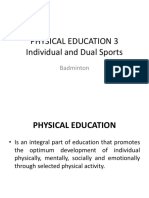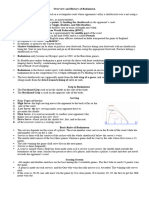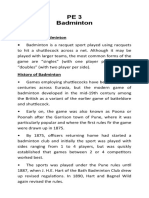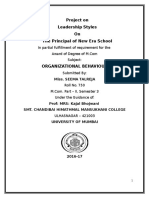0% found this document useful (0 votes)
89 views47 pagesPROJECT
The document is a Physical Education project on badminton submitted by Kanishk Vikram for the academic year 2024-2025. It covers various aspects of badminton including its history, rules, equipment, fundamental skills, and notable tournaments. The project is part of the curriculum for the All India Senior Secondary Certificate Examination (AISSCE).
Uploaded by
siya867agnesCopyright
© © All Rights Reserved
We take content rights seriously. If you suspect this is your content, claim it here.
Available Formats
Download as PDF, TXT or read online on Scribd
0% found this document useful (0 votes)
89 views47 pagesPROJECT
The document is a Physical Education project on badminton submitted by Kanishk Vikram for the academic year 2024-2025. It covers various aspects of badminton including its history, rules, equipment, fundamental skills, and notable tournaments. The project is part of the curriculum for the All India Senior Secondary Certificate Examination (AISSCE).
Uploaded by
siya867agnesCopyright
© © All Rights Reserved
We take content rights seriously. If you suspect this is your content, claim it here.
Available Formats
Download as PDF, TXT or read online on Scribd
/ 47























































































